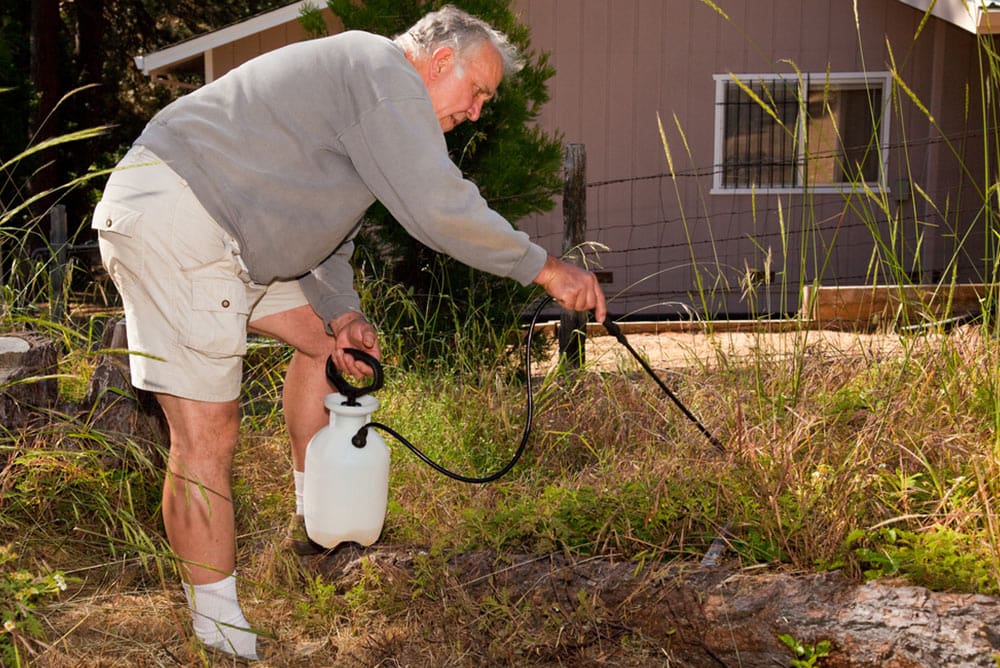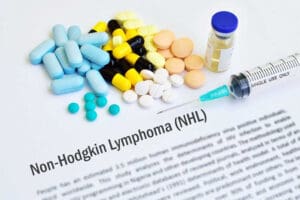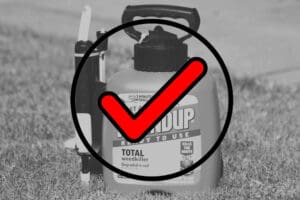Key Takeaways
- Glyphosate, the active ingredient in Roundup, has been linked to cancer, particularly non-Hodgkin’s lymphoma, and other health issues like liver damage.
- Exposure to glyphosate can occur through agricultural and residential use, dietary intake, and environmental contact, with agricultural workers at higher risk due to frequent and direct contact.
- Regulatory guidelines for safe glyphosate exposure levels vary, with the EPA and EFSA providing different recommendations based on animal studies.
- To limit glyphosate exposure, follow safety instructions, wear protective gear, wash produce thoroughly, and stay away from treated areas for at least 24 hours.
By now, you’ve probably heard about the controversy surrounding Roundup weed killer and its active ingredient glyphosate. Glyphosate’s link to specific types of cancer in humans, namely non-Hodgkin’s lymphoma, has rightfully worried scientists and consumers for years and sparked thousands of lawsuits. The scandal led to the removal of glyphosate from Roundup’s residential formula, but the damage has already been done.
Glyphosate is still the most widely-used herbicide on the commercial market. People will continue to be exposed directly and indirectly every day. At what point does it become dangerous? And what if you used glyphosate-based Roundup years ago? Should you worry about getting sick?
It’s unfair that you have to ask these questions. Roundup manufacturers failed to protect your health and peace of mind. But hopefully, a bit of education and understanding can ease your concerns and leave you better equipped to protect yourself and your family. Let’s take a closer look at Roundup, glyphosate, and how much exposure is “too much.”
If you think Roundup is to blame for your non-Hodgkin lymphoma diagnosis, or if someone you love was affected, remember you have rights. Join the Many for a quick, no-cost case review to learn if you may qualify for a settlement. You’ll only pay legal fees if you’re awarded compensation.
A study in 2019 found that people with high exposure, like you might get from spraying Roundup commercially, saw their risk of non-Hodgkin’s lymphoma increase by 41%.
What Health Concerns Are Linked to Roundup Exposure?
Roundup’s main ingredient, glyphosate, was first linked to cancer in 2015 by the World Health Organization. Researchers there classified it as “probably carcinogenic” in humans after a series of tests on animals. After all these years, experts and government agencies are still divided when it comes to glyphosate’s effect on human health.
For example, the U.S. EPA maintains the chemical is safe when you follow its use directions. However, a study in 2019 found that people with high exposure, like you might get from spraying Roundup commercially, saw their risk of non-Hodgkin lymphoma increase by 41%.
Glyphosate exposure has also been linked to endocrine disruption, which causes hormonal imbalances, liver and kidney damage, reproductive issues, and neurological disorders. One 2023 study from the University of California, Berkeley revealed how childhood exposure to glyphosate led to liver inflammation and metabolic disorder in early adulthood, which could cause liver cancer, diabetes, and cardiovascular disease later in life.
While the scientific debate remains uncertain, the legal picture is much clearer for victims who want to hold Bayer, the company that acquired Roundup maker Monsanto, accountable. Bayer insists the product is harmless, but courts aren’t convinced. Evidence linking Roundup glyphosate to cancer is strong enough that Bayer has set aside billions to pay off thousands of victims. Request your free case review and we can help you determine if you or your loved one may be owed money.
Guidelines for Safe Glyphosate Dietary Exposure Levels
Over the years, regulatory agencies across the world have established conflicting guidelines about how much glyphosate exposure is “safe” for the average person to endure.
For example, the EPA once set glyphosate’s chronic reference dose (RfD) at 1.75 mg/kg body weight per day for dietary exposure, which is intended to be safe for lifetime exposure. In contrast, the EFSA set a lower acceptable daily intake (ADI) of 0.5 mg/kg body weight per day. These guidelines are based on extensive reviews of animal studies.
We want to know–and deserve to know–that our food is free from pesticide residue that could make us sick. But what about the air we breathe? What if it touches our skin?
Today, the EPA has established tolerances for glyphosate on human and animal food crops, including corn, soybean, oil seeds, grains, and some fruits and vegetables, ranging from 0.1 to 400 parts per million.
Now that glyphosate has been removed from Roundup’s residential formula, most people are only concerned about these dietary exposure guidelines. The chemical is still widely used agriculturally to treat crops we rely on heavily in this country. We want to know–and deserve to know–that our food is free from pesticide residue that could make us sick. But what about the air we breathe? What if it touches our skin? What about the men and women who are forced to use glyphosate every day at work?
More research is needed to establish exposure guidelines that would keep us safe in these scenarios too. In the meantime, you can protect yourself by understanding other exposure risks.
How Can You Be Exposed to Glyphosate?
Even if you aren’t an avid gardener with a shed full of Roundup bottles, there are many avenues for glyphosate exposure.
Agricultural Use
Agricultural workers in particular are at high risk for glyphosate exposure during the mixing, loading, and application of the herbicide. They can also come into contact with it through treated crops and soil. This exposure can occur via inhalation, skin contact, and accidental ingestion.
If you’re worried about Roundup exposure and its link to cancer, talk with your doctor. Together, you can review your risk factors and medical history to see if you should be concerned.
Residential Use
Homeowners and gardeners who used the glyphosate formula of Roundup to control weeds in lawns and gardens may have been exposed through skin contact or inhalation.
Dietary Exposure
Glyphosate residues can be found in food products, particularly in crops like soybeans, corn, and wheat. Exposure usually happens by ingesting contaminated food and water.
Is This Something You Should Know About?
When exposure to Roundup can build over time and higher contact has been linked to a sharply increased risk of non-Hodgkin’s lymphoma, it raises fair questions about your health. If you or someone you love used Roundup at home or for work and later faced lymphoma or leukemia, it may be connected.
A University of Washington review found that people exposed to glyphosate, the main ingredient in Roundup weed killer, had an over 40% higher risk of developing non-Hodgkin’s lymphoma. After years of growing evidence, multiple multimillion-dollar awards have already been secured for people with lymphoma or leukemia.
Join the Many has helped thousands of people, and their families, explore whether they may qualify for compensation. Their partner attorneys secured a $1.56 billion Roundup verdict that was later reduced to $611 million.
If you used Roundup even on your own property, you may want to find out if this applies to you. It’s easy to start. Just answer three quick questions, and a Join the Many specialist will reach out to guide you through your options.
There’s no cost and no obligation. It’s simply a way to make sure you’re informed about every resource that could help you.
Roundup NHL/Leukemia Lawsuit Quick, No-Cost Review Answer the questions below to find out if you qualify for compensation.
"*" indicates required fields
Incidental Exposure vs. Occupational Exposure
Your job can determine your risk for glyphosate exposure. Most people won’t need to worry about being exposed to dangerous levels of the chemical. But it’s riskier for those who regularly work with Roundup. That’s the difference between incidental and occupational exposure.
Incidental Exposure
The general population is exposed to glyphosate primarily through dietary sources and residential use. Although the exposure levels are generally lower, the potential for chronic, low-level exposure remains a concern.
Occupational Exposure
Agricultural workers, landscapers, and individuals involved in pest control regularly come into direct contact with glyphosate. This group experiences repeated and often high-level exposures. Protective measures, such as wearing personal protective equipment (PPE) and adhering to safety protocols, are essential in reducing the risk.
Can You Be Tested for Glyphosate?
There are blood and urine tests that can detect glyphosate in your body. However, there is no reliable way to determine what your lifetime exposure level is. At best, these tests can let you know if you were recently exposed to glyphosate. There’s also no test to predict if you’ll experience health complications later on.
While debate continues over what counts as “safe” levels of glyphosate exposure, there are no downsides to being proactive about protecting yourself and your family.
If you’re worried about Roundup exposure and its link to non-Hodgkin lymphoma, talk with your doctor. Together, you can review your cancer risk factors and medical history to see if you should be concerned.
How Can I Limit My Exposure to Glyphosate products?
Whether or not you use it as part of your job, there are ways to limit your and your family’s exposure to glyphosate.
- When using a product containing glyphosate, follow directions on the label carefully.
- Wear protective clothing and eyewear.
- Do not spray it on you, stand in the spray, or let the spray drift or blow on you.
- Avoid getting glyphosate on your skin or in your eyes. In case of contact, rinse immediately.
- Wash your hands after applying ANY weed killer.
- Do not eat, drink, or smoke while applying glyphosate. Wash your hands immediately after use.
- Avoid walking barefoot on treated areas for 24 hours, or until after a rainfall or watering.
- Wash all produce thoroughly before you eat it and wash your hands after handling plants that have been treated with glyphosate.
- Keep children and pets away from areas recently treated with glyphosate.
- After glyphosate is applied, do not let children or pets play on or touch lawns, gardens, golf courses, parks, or other grassy areas until 24 hours have passed, or until after a rainfall or watering.
While debate continues over what counts as “safe” levels of glyphosate exposure, there are no downsides to being proactive about protecting yourself and your family. Follow all application directions to a T, keep it off your skin and out of your eyes, and avoid recently-treated areas.
If you’re one of the thousands of people who have already been exposed and gotten sick, we’re here for you. Our legal system doesn’t always make it easy for “the little guy” to stand up for what’s right. But Join the Many is changing that.
If you’ve been harmed by Roundup, contact us. We’ll help you understand your rights and connect you to the best legal care for your case so you can claim the benefits you deserve. Our attorneys will do the hard work for you in and out of the courtroom, handling all the paperwork, record gathering, and litigation.
Frequently Asked Questions
Any exposure to Roundup can be potentially harmful. Long-term or repeated exposure is most concerning due to its link with serious health issues like cancer.
Brief exposure to Roundup is unlikely to cause immediate health problems, but protective measures should always be taken to avoid any contact.
Symptoms can include irritation of the skin, eyes, and respiratory tract, nausea, vomiting, and dizziness. Severe cases can lead to more serious health issues.
Use personal protective equipment such as gloves, masks, and goggles, and follow all label instructions carefully when handling Roundup.
Rinse the affected area with plenty of water and seek medical advice, especially if symptoms develop or if exposure was significant.




